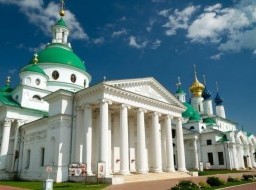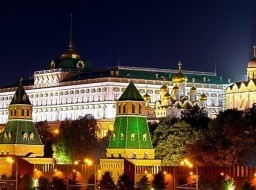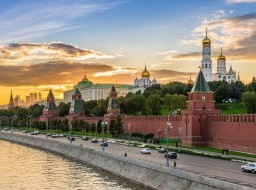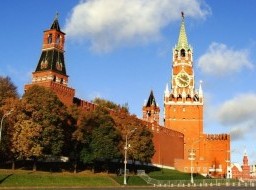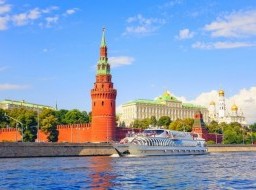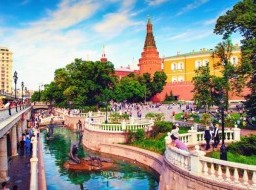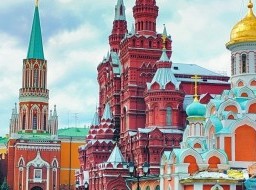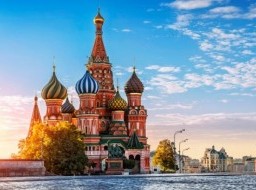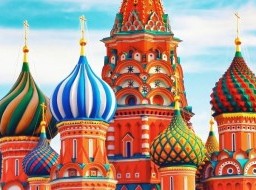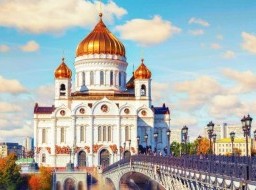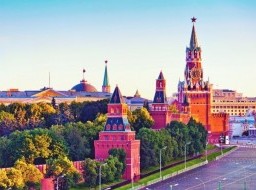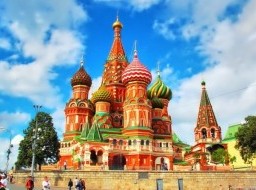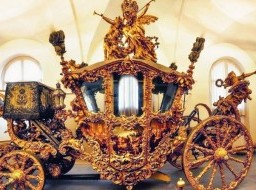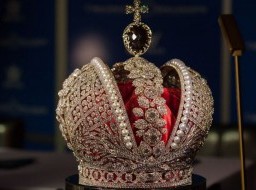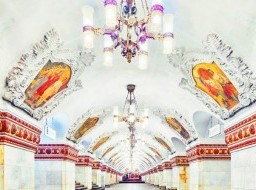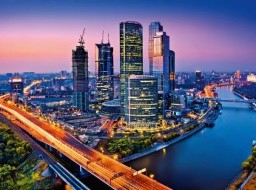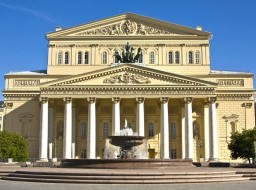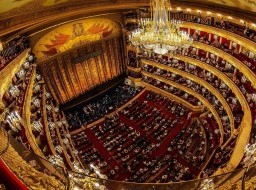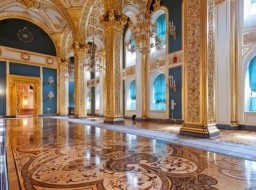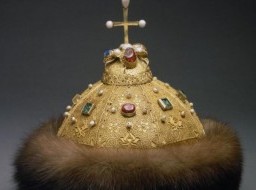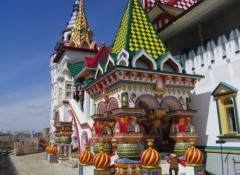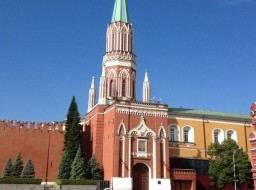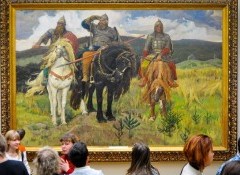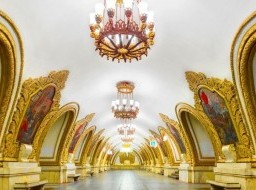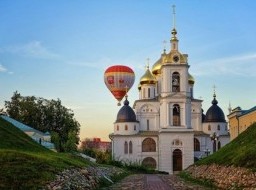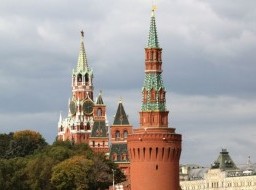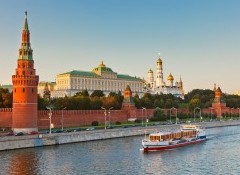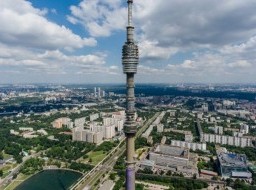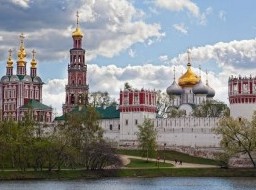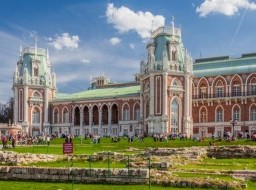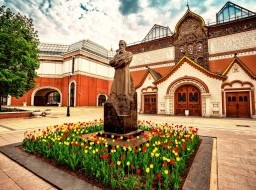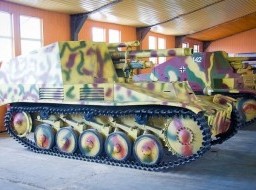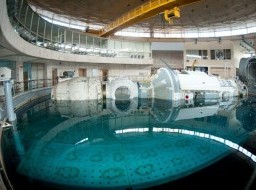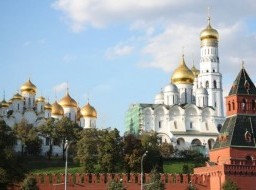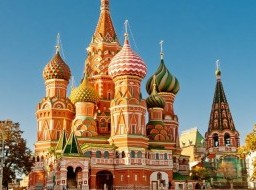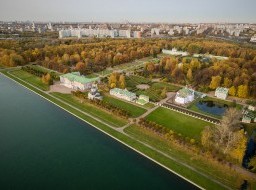Terem Palace
The 17th-century Terem Palace is the most splendid of the Kremlin palaces. It is one of the oldest royal dwellings still standing, and the first one made of stone. It is a real gem of Russian artistic culture due to its original decoration, bright exuberance and the marriage of flight of the imagination and clear-cut architectural composition. The Terem Palace is currently an official residence of the president, and is closed to the public. It is almost impossible to visit the palace, except by special permit. It is however a wonderful attraction of Moscow and one of the most famous place and a great historic spot. The fabulous Terem Palace was built in the inner courtyard of The Great Kremlin Palace in the late sixteenth century by Tsar Alesio, this being the first Royal Palace. An amazing historical building, it was the main residence of all the Russian Tsars that ruled the country since the 17th century. It is believed that the palaces and the underground of the Kremlin still shelter the ghosts of the tzars. The interior is a real cultural treasure being heavily decorated, having several annexes and outbuildings as well as a platform for noble lords, a golden veranda and a ladder made of the same material, and many towers with a great view of the city. Inside the complex was built the Saviour Cathedral with gilded 11 domes and the Golden Room of the tzars. Over time there were built many religious monuments. The beautiful halls and the cathedrals of Kremlin host today quintessence of the Russian history and civilization. Its basement was used for household cells and storerooms. On the first floor there were workshops where garments were made and kept for the tsar. The tsar and tsarina's bedrooms were on the second and the third floors. The Upper Terem with a gilded roof is on the flat roof of the Terem Palace proper and is surrounded by a balcony, or the Upper Stone courtyard. The architecture and decor of the palace are typically representative of the Russian tracery-like architecture. Its carved and painted ornaments almost seem like embroidery. The carved decorative elements on the brick walls of the palace are made of white stone. The builders used all the materials, forms and decorative elements at their disposal to decorate the most wondrous chambers. The portals, cornices and window-frames are all covered with bright white-stone carvings, painted ornaments and colorful relief tiles, which add to the atmosphere of the building. The double windows of the upper floors, with their triple arcades and hanging decorative weights, are crowned by triangular or broken frontons propped by pilasters. Their broad surfaces are filled in with the interlaced floral patterns and figures of double-headed eagles and other mythological birds and beasts. The multi-tier silhouette of the building is completed by a high pyramidal canopy roof. The gilded roof with an open work grille on top is visible from afar. A white-stone carved staircase leads to the gala halls of the Terem Palace. In days long past it was called the Golden Porch. The staircase has upper and lower landings. The entrance to the Palace is "guarded" by stone lions standing upon their hind legs. The tsar's living apartments on the third floor of the palace consist of a suite of five adjoining rooms. Very few guests were honored to be admitted to the tsar's presence in the upper rooms. The first room of the Terem Palace was the Front Vestibule, or Anteroom. It was also called the Refectory. Every day the boyars gathered there to wait for the tsar. Sometimes banquets were held there. In the second room- the Council or Duma Chamber- the tsar held sessions with the boyars. The next room, the most majestic, is the Throne Hall, or the tsar's study. The gilded emblems of all the Russian territories adorn the Hall's purple walls. The next room is the bedroom. It gives access to the Prayer Room. It is covered with painted figures of saints. There are 17th-18th century icons in two gilded carved encasements here. All the rooms in the Terem Palace are small and low and about the same size; each has three windows and a vaulted ceiling. The supports of the vaults are decorated with bas-reliefs depicting birds, beasts and double-headed eagles. The doorframes are low and decorated with painted and gilded stone carving. In those days the floor was laid in oak blocks and then covered first by felt and then by green or red cloth. On solemn occasions carpets were spread on top of the cloth. The stained glass in the windows is made of various squares and triangles and the wooden windowsills are finely carved which all gives a fabulous effect when the sun shines through the colored glass. During receptions of foreign ambassadors the tsar's rooms were decorated with even greater luxury so as to convince the foreigners of the strength and power of the Russian state and its sovereign. Persian carpets and colorful fabrics were spread in front of them all along the way. Numerous guards and servants dressed in valuable cloths given to them by the treasury for such occasions lined the passages and stairways of the palace. Despite the numerous rebuilding and additions, the 17th-century Terem Palace has largely retained its original splendor. The harmony of the outward appearance and the interior decoration of this unique monument of history and art are truly remarkable. It testifies to the high skills of Russian architects and painters, their rich imagination and a high level of intellectual culture. |
|
